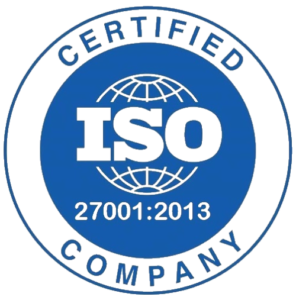The pandemic hit economies globally and brought down a few industries. And, the events industry has been one of the worst-hit since people couldn’t meet up in person. This led the industry players to adapt and launch virtual and hybrid events.
Granted, there were virtual events pre-COVID. However, they were the exception. Besides, humans just loved to gather together and share spaces. Moreover, in the corporate world, in-person meetings are better, especially because you can see the person’s body language and other non-verbal communications.
As the in-person events industry tries to find strategies to survive the new realities of a post-Covid world, the virtual and hybrid event niche sees opportunities to grow.
There was a time when there was little you could do after missing an in-person event. Previously, if one missed an in-person event, they’d have to live with it or get snippets from shaky phone recordings. With today’s virtual and hybrid alternatives, attendees who, for whatever reason, missed the event can still access the content on-demand.
The changes in how events are executed have also revolutionized how they are marketed. The pandemic put a lot of people indoors, which meant that the only form of socializing available was the internet. Therefore, being visible online is very vital.
So, how are virtual and hybrid event organizers marketing their events? Here are seven strategies they’re leveraging:
Strategy 1: Social Media Marketing

It is a no-brainer; more and more people are turning to social media platforms for edutainment. It is advisable to make sure that your business is visible where your target clients are scrolling.
The number of social media platforms keeps growing. Each platform has its requirements, algorithms, and preferred content type. To be successful at event marketing on social media marketing, you need to understand how each platform works.
For starters, Facebook is a text and image-based platform. Twitter is a short text platform that allows visual attachments, and LinkedIn is quite the formal platform.
Instagram is mostly image-based, though they now incorporate short and long-form videos. TikTok thrives on short videos, while YouTube is best for longer videos.
Each of these platforms has its demographics. For example, TikTok is mainly made of younger citizens, and this means that if your event is not meant for this young audience, TikTok wouldn’t be your best marketing option.
Once you learn the demographics of each platform and determine your audience, it’s time to get down to work.
Create content that appeals to your target client.
Experiment with various forms – text, images, and videos.
Keep track of the performance of your posts.
Finally, be sure to build a community on your preferred online channel. This helps attendees know more about the event and even have discussions on it. Additionally, the attendees can share information about the event with their peers.
Strategy 2: Define your KPIs right from the start

Now that you have an idea of the platforms you’d like to work with, define the KPIs. What do you wish to achieve?
The answer to this question will direct your content strategy, and it will help you figure out the best type of content per platform and the most appropriate time to post the content.
Here’s the thing; you may not get it right the first time. However, you can experiment with different elements of your marketing content until you find what works for you. The platforms already come with inbuilt analytics, which comes in handy when tracking ROI.
When you finally get it right, and your first event is sold out, don’t relax. There’s always something new on the social media world that can make you invisible pretty quickly. Keep in mind that your competitors are also working hard to be visible to their target market.
You can combine several social media marketing strategies. For starters, you can create exceptional content that is likely to go viral. Or hire a professional to do it for you. Instagram influencers (from micro to mega) have been instrumental in marketing events online.
In most cases, when someone you look up to recommends a service or product enough times, you’ll most likely end up making a purchase.
When using influencers, check the demographics of their audience. They may not always appeal to your target clients. Once you are sure that you appeal to the same demographics, engage and track their ROI. Be sure to request the analytics and evaluate the KPIs periodically.
How to track hybrid event marketing KPIs
It is easy to track KPIs if you know how to work the analytics of the platforms and tools you are using.
For example, you can track the open rate, click-through rate, and response rate if you are using email. Using social media platforms, you can check the click-through, conversion rates, and new follows post/event shares, and event registrations.
If you are using different influencers, you can give each of them a signup code. These unique codes help you to track the influencer’s performance and influence. It is important to note that you can hire different influencers based on the event at hand.
Strategy 3: Develop a promotions strategy
76% of events marketers work with emails as they consider this the most effective option. 60% of virtual events hosts say that social media platforms drive registrations. 49% of marketers would rather just deal with programmatic advertising.
The strategy you use will depend on the desired results.
Set a promotion budget and stick to it. Be as comprehensive as possible when determining the promotions KPIs and ROI.
The speakers and VIP attendees can also help market your hybrid or virtual event. Some attendees will do anything to attend your event just because of who the speakers will be.
If you decide to use the speakers and VIP attendees in the marketing strategy, you can create posters and share them on social media.
The posts can have links to the separate registration forms and checkout procedures. This allows the clients to the site to see other upcoming events.
Strategy 4: Networking Sessions and word-of-mouth recommendations

Events planners can leverage the social and formal networks of their sponsors and exhibitors. These groups of people may have a large following online, and their followers may be your target clients. The same trust they put in the event sponsors, speakers, and exhibitors will be translated to more attendees.
Your business can partner with reputable brands for increased visibility as well as an upscale virtual event.
Be sure to talk about other upcoming events as well. You can also decide to offer branded gift bags for those who attend the in-person sessions, and virtual attendees may get virtual bags of gifts in the form of access to exclusive content.
Strategy 5: Tier your tickets to appeal to different attendees

It is impossible to give VIP seats to all attendees of an event. However, it is possible to tier the event tickets to appeal to as many of your target clients as possible.
A common strategy has early bird offers. Attendees who wish to book early enough get a discount. Those who wait till the last minute for the event get a higher price.
If you are holding a purely virtual event, the tiers can come with goodies such as access to further resources. This could be access to books, video libraries, etc., depending on the type and subject of the event you will be hosting.
Strategy 6: Create a dedicated webpage for the event

Yes. A whole webpage just for that one event.
The separate web page creates emphasis on the event. Instead of vital information getting lost on the regular website, you can have a dedicated page that deals with just that one event.
Be sure to have a webpage that matches your brand – the colors, tone, branding, etc. It shouldn’t look like it is not part of your business, and it should look like an extension of your website.
If you are not a web designer, you can hire the services of a professional. The webpage can have such tools as a countdown, and it can also offer tickets, if any, displayed prominently to help potential attendees grab them before time runs out.
Strategy 7: Create exclusives to build excitement
Hybrid events are fascinating. In-person attendees experience something different from what the virtual attendees experience. If you usually host such events, come up with fun BTS shots to share with the virtual attendees.
In addition to exclusive behind-the-scenes footage, offer exclusive interviews. Be sure to keep track of the performance of the different strategies. When creating marketing and sales content, be sure to create what appeals to the different attendees.
Conclusion
It is much cheaper, faster, and more effective to market hybrid and virtual events online. Additionally, it is easy to track the performance of the content through built-in analytics. You are at liberty to pay an extra amount for more comprehensive analytics if you need them.
Successful events businesses should employ a range of marketing and sale strategies if they want to succeed. Before engaging in any of the strategies mentioned above, be sure to understand the platform, its demographics, and the most effective content type.
















